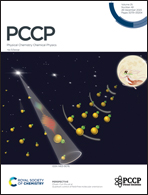High temperature gamma radiation-induced chromium redox chemistry via in situ spectroscopic measurements
Abstract
Chromium ions can make their way into the primary coolant of nuclear power reactors from the corrosion of stainless-steel reactor components, decreasing the material's corrosion resistance and resulting in increased transport of further corrosion products. Despite these potential effects, the radiation-induced redox speciation of chromium ions in aqueous solution is not well understood, especially at the elevated temperatures experienced by reactor coolants. In the present work, we report new experimental results demonstrating that in aerated aqueous solution, the radiolytic oxidation of Cr(III) to Cr(VI) occurs at pH 4, while the reduction of Cr(VI) to Cr(III) occurs at pH 2. The oxidation of Cr(III) is primarily attributed to the reaction of the hydroxyl radical (˙OH) with the Cr(OH)2+ species, while the reduction of Cr(VI) is attributed to reactions involving the hydrated electron (eaq−) and hydrogen atom (H˙). Additionally, the steady-state equilibrium yield of Cr(VI) from the gamma irradiation of pH 4 Cr(III) solutions decreased with increasing temperature (over a range of 37–195 °C). This observation indicates that the activation energy of the Cr(VI) reduction reactions is higher than that for the Cr(III) oxidation reactions, such that it becomes relatively more favorable at higher temperatures. Overall, these data are important for the development of complementary multiscale models for the prediction of metal ion speciation in high temperature radiation environments.



 Please wait while we load your content...
Please wait while we load your content...